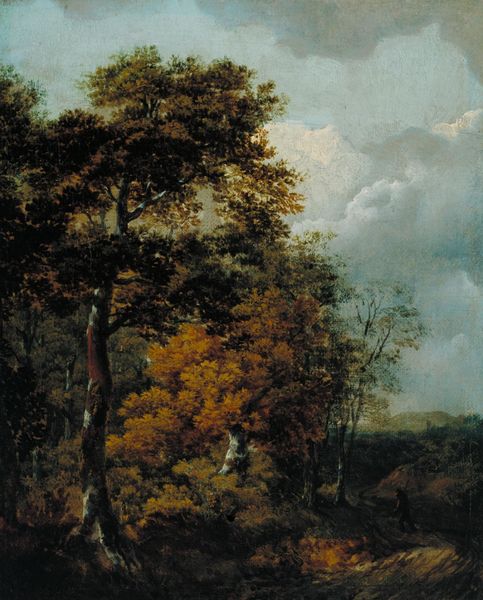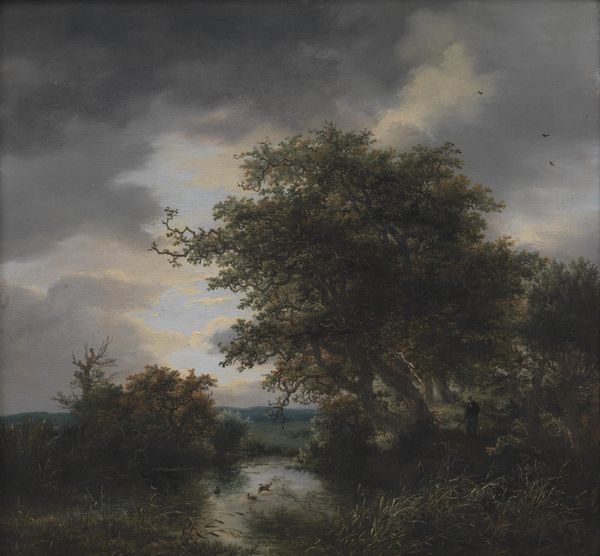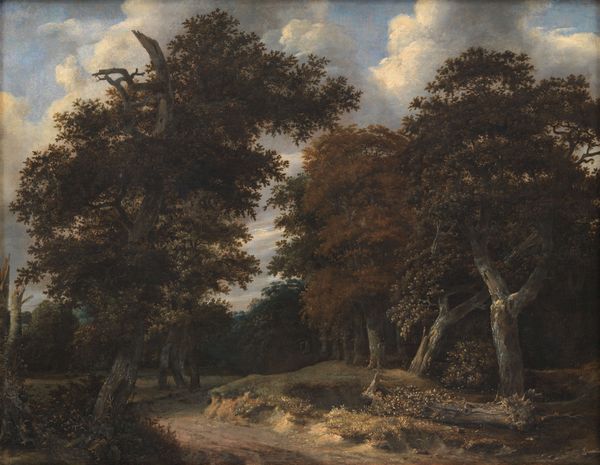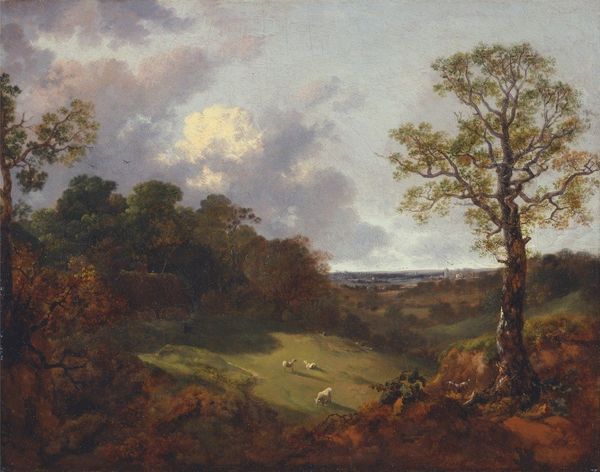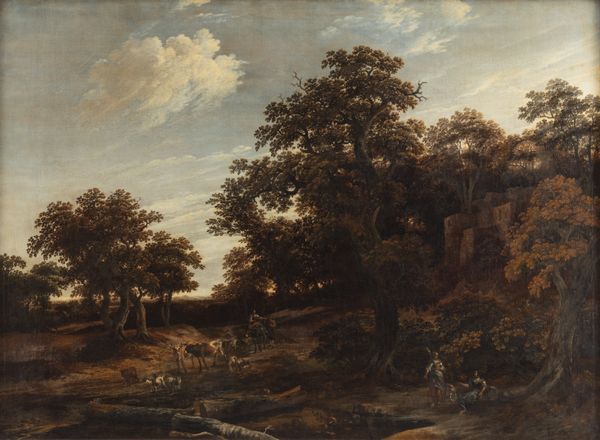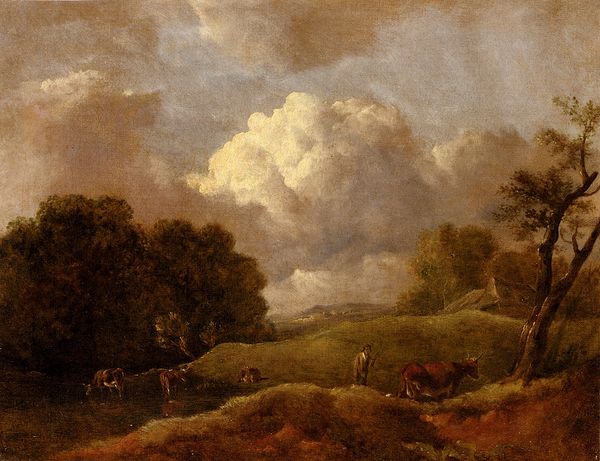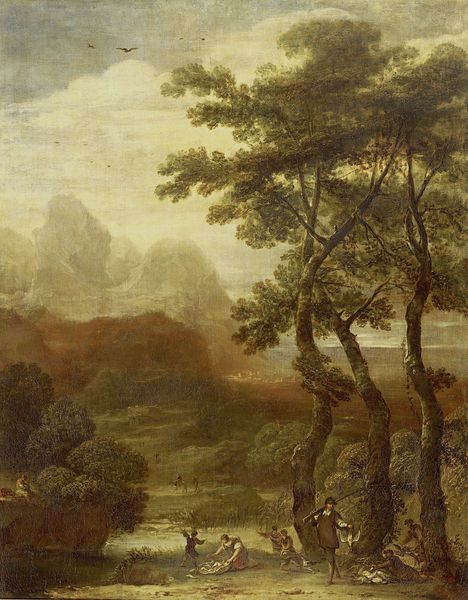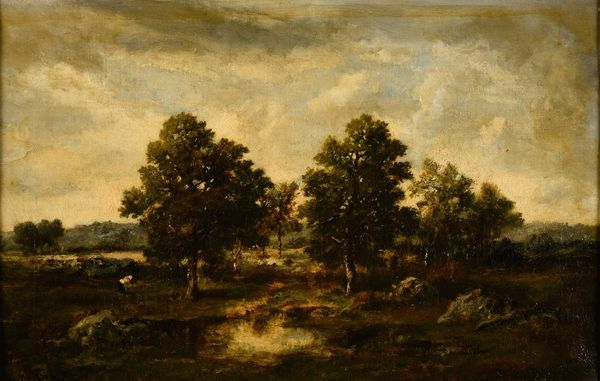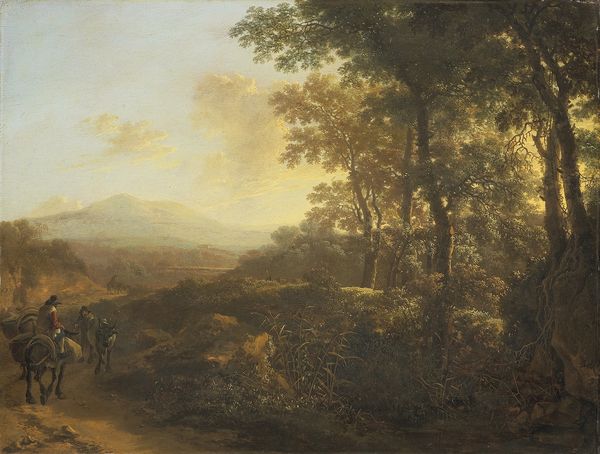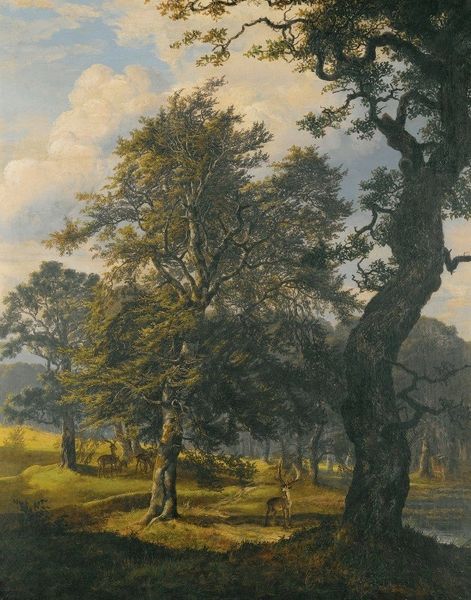
Dimensions: support: 625 x 781 mm frame: 830 x 972 x 100 mm
Copyright: CC-BY-NC-ND 4.0 DEED, Photo: Tate
Editor: Here we have Thomas Gainsborough's "Wooded Landscape with a Peasant Resting," currently residing at the Tate. I find the brushwork particularly striking. How do you interpret this work's symbolism? Curator: Gainsborough often embeds cultural memory within idyllic scenes. The resting peasant, seemingly at peace, might symbolize a romanticized view of rural life, masking the harsh realities of the time. Note the church spire—a recurring motif. Editor: So, are you suggesting that this landscape is more complex than it initially appears? Curator: Precisely. The symbols evoke a longing for a simpler past, a pastoral fantasy that speaks to the viewer's own desires and anxieties. Consider also the looming clouds. What do they represent? Editor: I see your point; it's fascinating how the symbols intertwine with cultural context! Curator: Indeed, art often serves as a mirror, reflecting our collective dreams and fears through potent imagery.
Comments
tate 8 months ago
⋮
http://www.tate.org.uk/art/artworks/gainsborough-wooded-landscape-with-a-peasant-resting-n01283
Join the conversation
Join millions of artists and users on Artera today and experience the ultimate creative platform.
tate 8 months ago
⋮
This is one of Gainsborough's first landscapes, painted during his apprentice years in London when he was about twenty years old. The influence of Dutch seventeenth-century landscape painters is apparent in the detailed naturalistic treatment of the foliage and the ordered composition. The view is not strictly topographical but rather a poetic interpretation of his native Suffolk scenery, bathed in a pink light. Although portraiture later became the main source of Gainsborough's fame and income, he was also one of the earliest British painters to produce important landscapes, admired for their freshness and fluency of handling. Gallery label, September 2004
